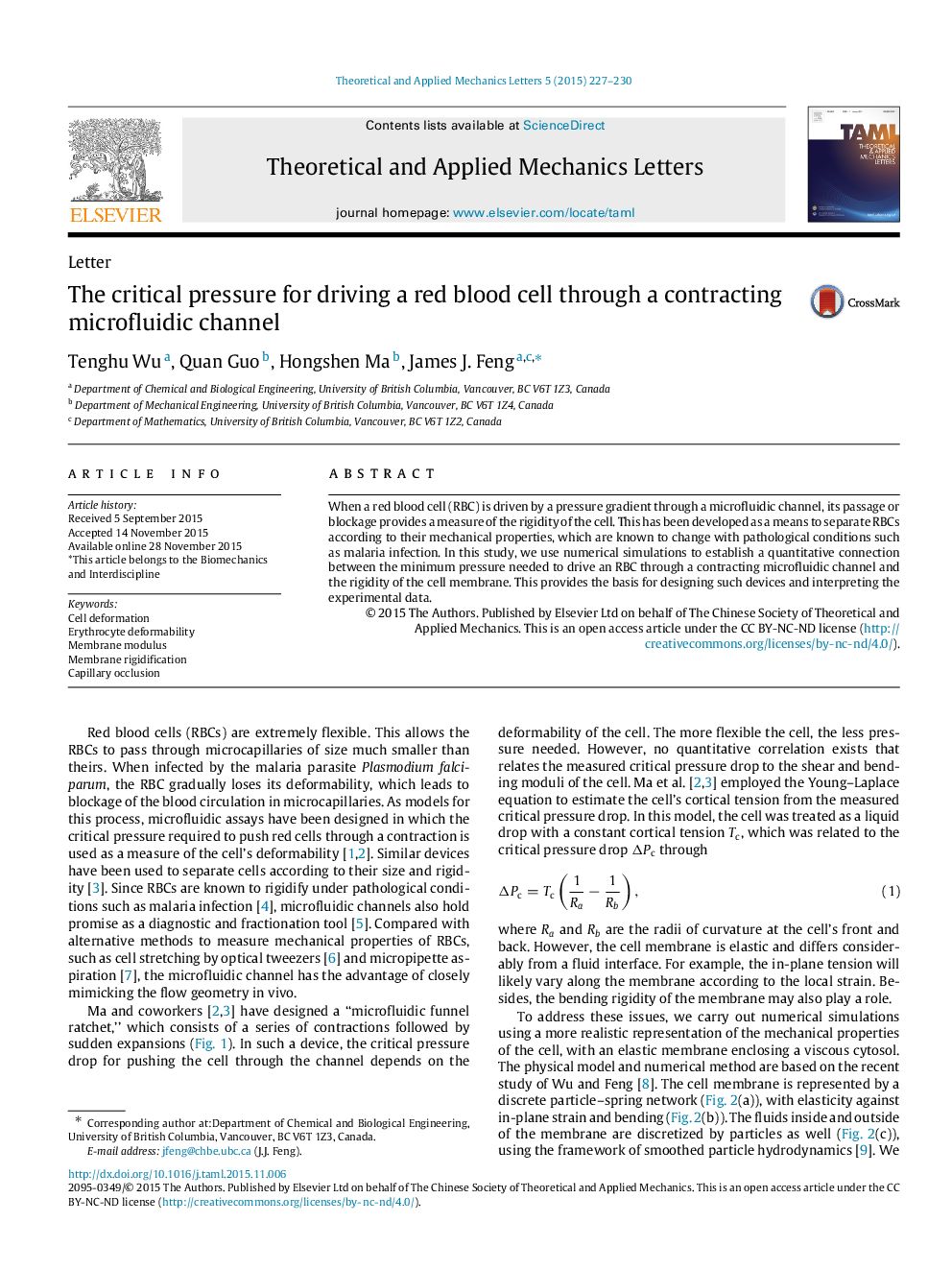| Article ID | Journal | Published Year | Pages | File Type |
|---|---|---|---|---|
| 805553 | Theoretical and Applied Mechanics Letters | 2015 | 4 Pages |
Abstract
When a red blood cell (RBC) is driven by a pressure gradient through a microfluidic channel, its passage or blockage provides a measure of the rigidity of the cell. This has been developed as a means to separate RBCs according to their mechanical properties, which are known to change with pathological conditions such as malaria infection. In this study, we use numerical simulations to establish a quantitative connection between the minimum pressure needed to drive an RBC through a contracting microfluidic channel and the rigidity of the cell membrane. This provides the basis for designing such devices and interpreting the experimental data.
Related Topics
Physical Sciences and Engineering
Engineering
Mechanical Engineering
Authors
Tenghu Wu, Quan Guo, Hongshen Ma, James J. Feng,
